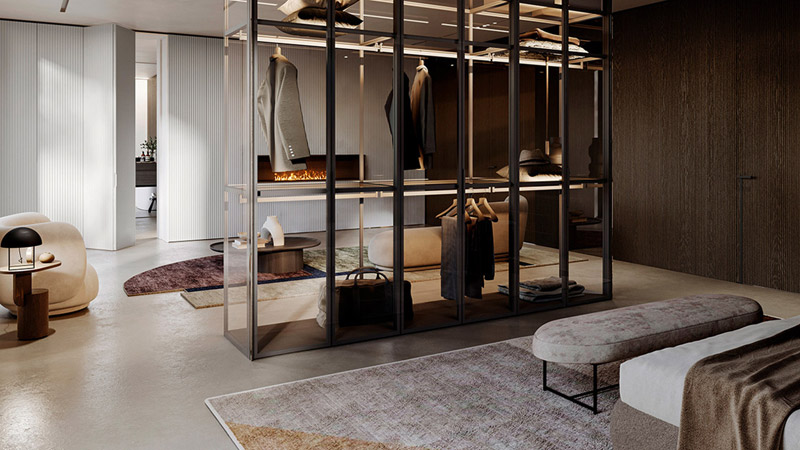Doors are the portals through which we establish the welcoming vibe of our homes. In an attempt to create our vision, we often focus on the front door, forgetting that often, like us, the interior door styles truly reflect what they are. Every room has a certain element that expresses a certain familiarity, and so each room is individual and in need of its indoor style.
This article explains interior door styles and how to choose the right type that reflects a personal statement, what door finishes are, and everything you need to know before you go door shopping.
Interior Door Styles
Unlike the front door, an interior door connects rooms within a house, an apartment, or a building. There are two interior door types: singles and doubles, each with several types that reflect a certain aesthetic.
Single Doors
First, we’ll be discussing single door styles :
1. Glass paned door
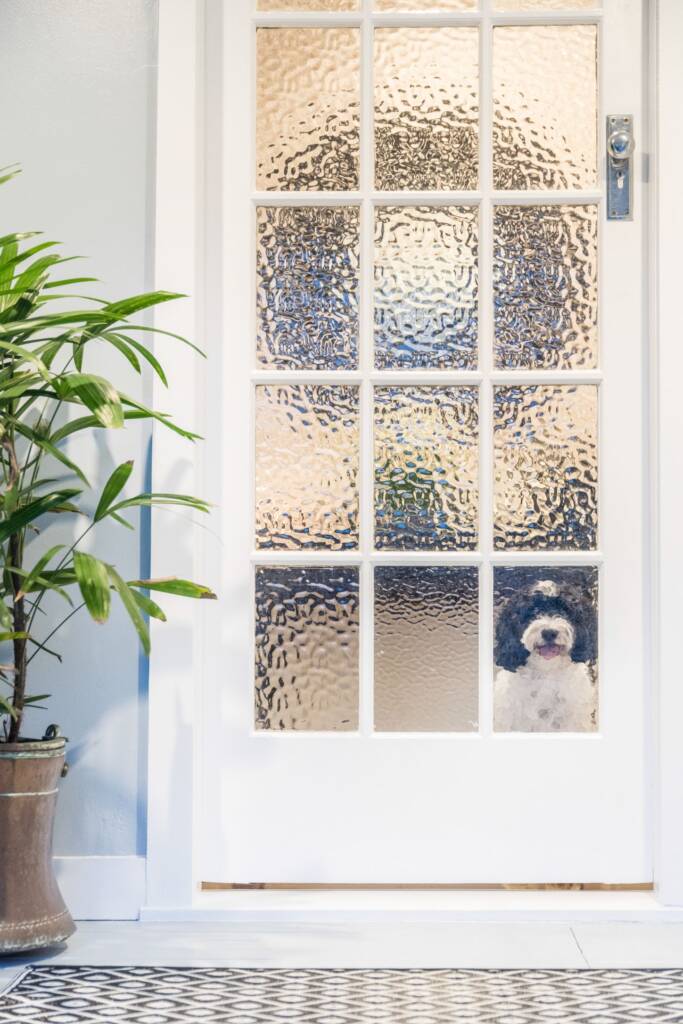
Glass-paned doors have a sentimental vibe. These doors have wooden frames and are sectioned with glass that provides a glimpse into the other space. They provide a feeling of togetherness and noise reduction but provide little privacy.
2. Solid wood doors
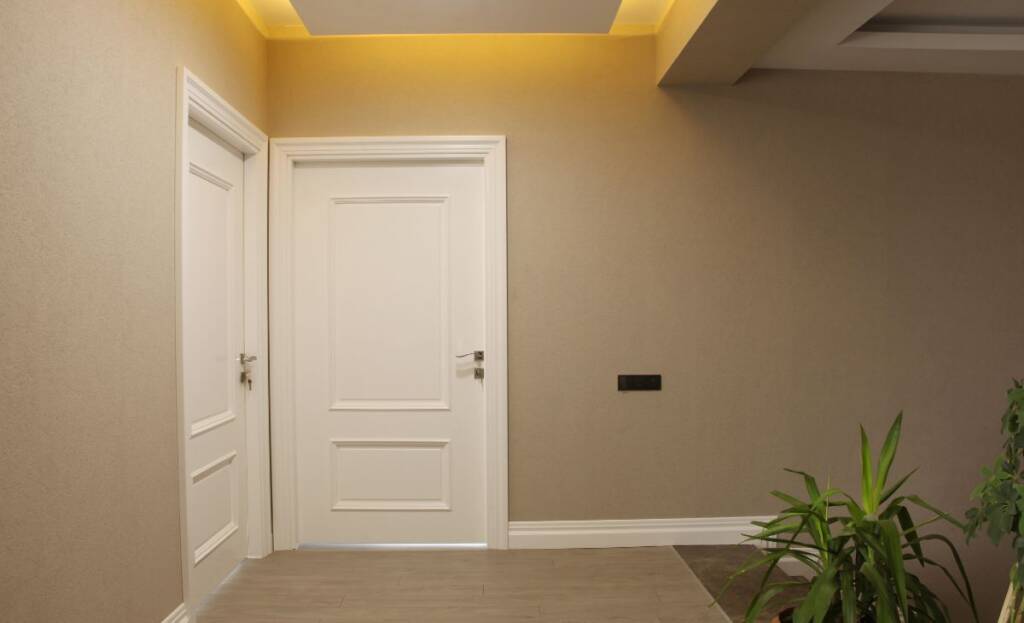
As the name suggests, these interior door options are sturdy. They provide a classic option reminiscent of ancient rustic style, especially depending on the interior door options and the color of the wood.
3. Unpainted wood doors
Like solid wood doors, these doors provide a particularly cozy feeling to the house. Wood comes in wonderful patterns and colors despite being unpainted. Individuals can pick a contrasting color of wood or a burnt wood tone to add a whimsical feeling to rooms.
4. Sliding doors
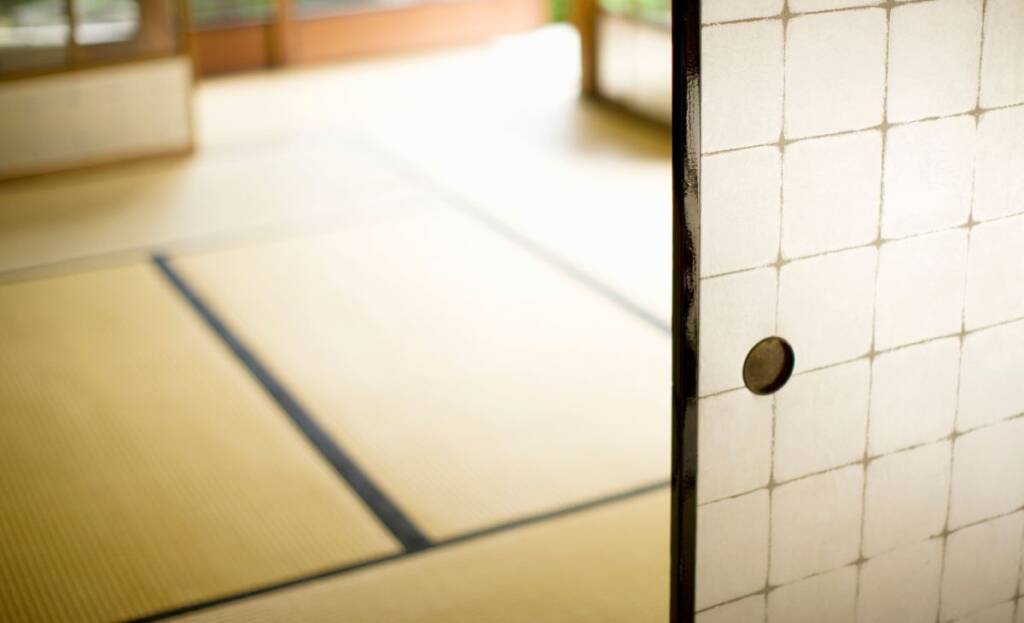
Sliding doors are suitable for a nonchalant appeal; they showcase effortless style. Despite implying a simple design, individuals can have a lot to work with. These types of interior doors can include different materials; individuals may choose a sliding glass-paned door or incorporate a geometrical design into the wood panel.
5. Moulded doors
Unlike previously discussed doors, Moulded doors use MDF, which is a specific kind of fiberboard that, when stacked, looks exactly like a wood panel. These doors allow room for creativity, as individuals can create and design patterns of their preference.
6. Shaker doors
Shaker doors are suitable for a minimalist style. Typically, they have a rectangular frame that outlines the door panel, adding a touch of refined definition. Despite being simple, individuals can play around with styles of interior door alignment, adding a different color or pattern that outlines the inner section of the door.
7. Barn doors
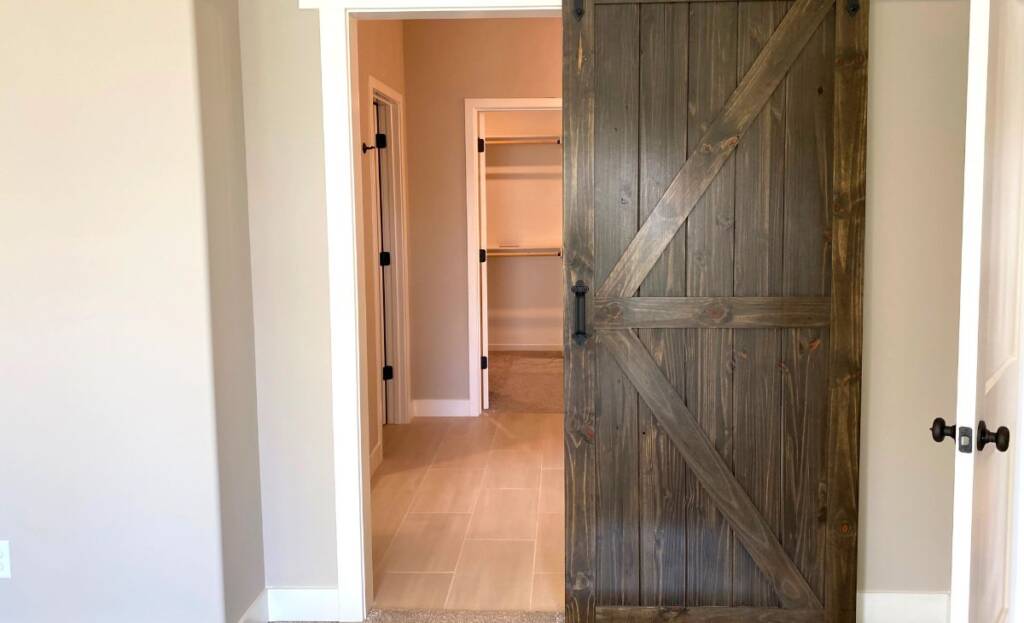
Barn doors are perfect for those looking to balance an early 16th-century house with an industrial modern vibe. They can be rectangular or arched and are easy to design. Individuals can include paned glass in the upper half or introduce a framed window for a personal touch.
8. Louvered doors
Louvered doors are perfect for bringing beach house appeal to a city or country home. They use sectioned wood panels aligned under each other, perfect for ventilation and a free-flow aesthetic. Contrary to belief, these types of indoor options provide privacy. However, they won’t prevent noise from coming from other rooms.
9. Frosted glass doors
Frosted glass doors are a unique depiction of privacy; they use the illusion of blurriness to allow light to enter a room. They are perfect for creating unique designs, as individuals may frost only certain parts of the glass to create an elaborate portrait.
10. Statement interior doors
Some styles of interior doors can help you make a statement. You can choose bold colors and designs to make your doors different.
11. Pivot doors
A pivot door uses upper and bottom hinges that allow individuals to rotate the door to enter rooms. It is perfect for open and large spaces. These types of inside doors have a contemporary, high-end feel, and individuals can choose many ways to design wood panels, mix patterns, or incorporate glass.
12. Dutch doors
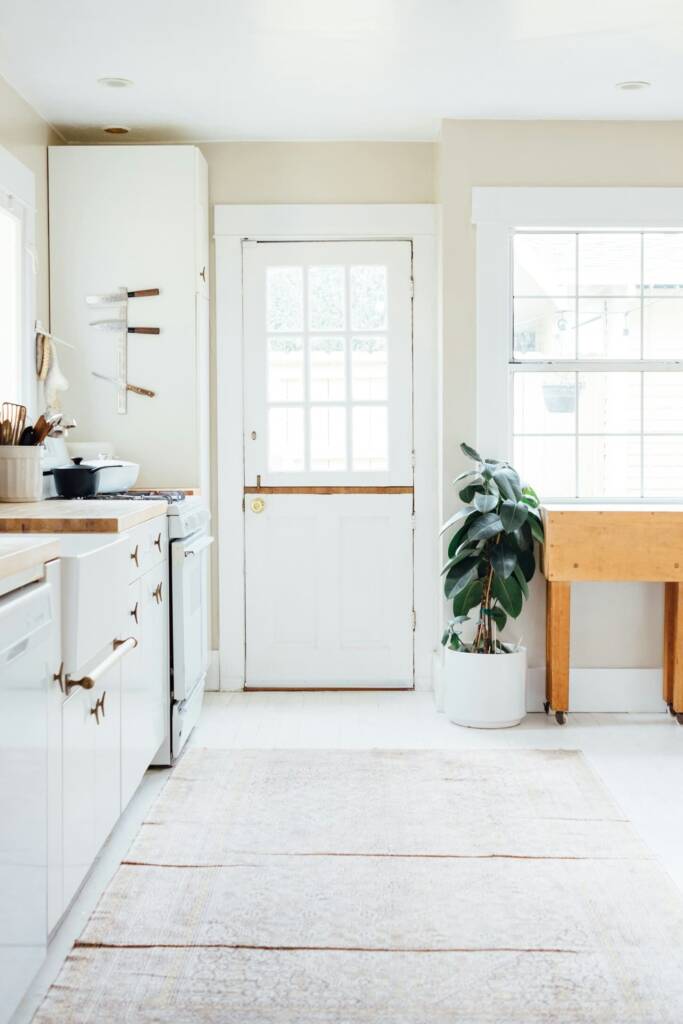
A Dutch door is split horizontally into two halves and uses side hinges. Individuals can open each section of the door separately. These doors have a farmhouse-style aesthetic and much 17th-century farmhouse appeal. Individuals can play around with the color of the door frame and introduce geometric patterns to the lower half while maintaining a simpler or glass-paned upper half.
Double doors
Like single doors, double doors join two rooms; instead of a single panel, they have two panels that open from the center.
13. French doors
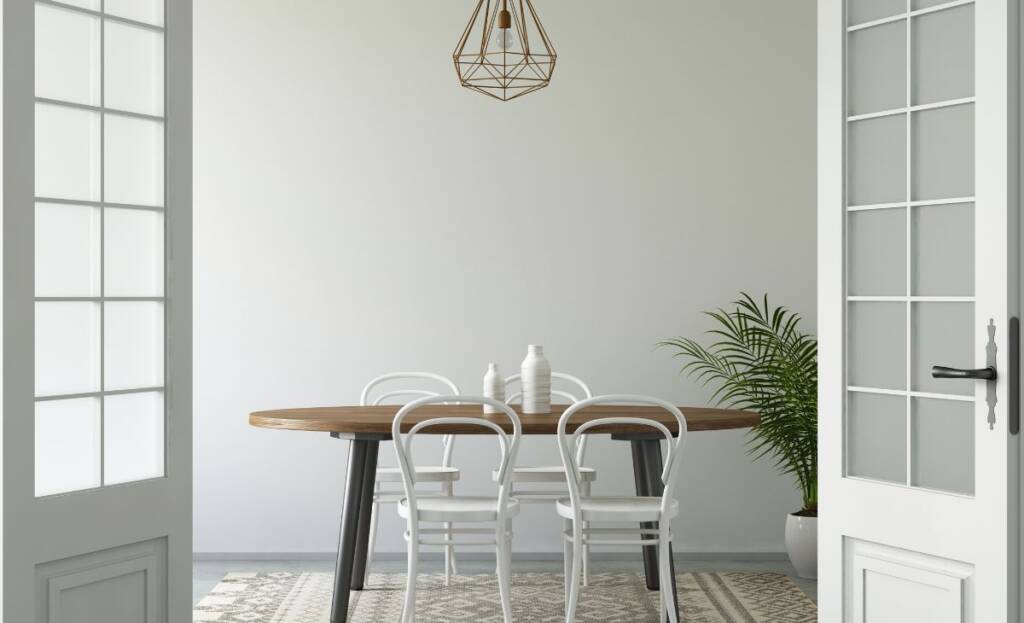
French doors are among the most popular interior door styles; they use double doors with two panels of glass-paned doors. Typically, they use paneled windows; however, individuals may add side windows to the length of the doors to add more space to the room. Individuals can sometimes opt for stained or frosted glass to incorporate a luxurious appeal to the house.
14. Arch doors
Arched doors maintain the usual rectangular shape at the bottom but are slightly curved at the top. These doors have a romantic temperament and add a 12th—to 16th-century gothic appeal to the house. Individuals can choose a solid wood panel or a glass-paned door panel to add a personal style.
15. Double pocket doors
Unlike swing doors, pocket doors have sockets within the wall to slide into as they open. They are perfect for saving space and are commonly used for walk-in closets.
16. Bifold doors
Bifold doors use single-panel doors connected by hinges and opened by folding panels against each other like an accordion. These types of inside doors have a unique design and require a lot of space.
17. Sliding double doors
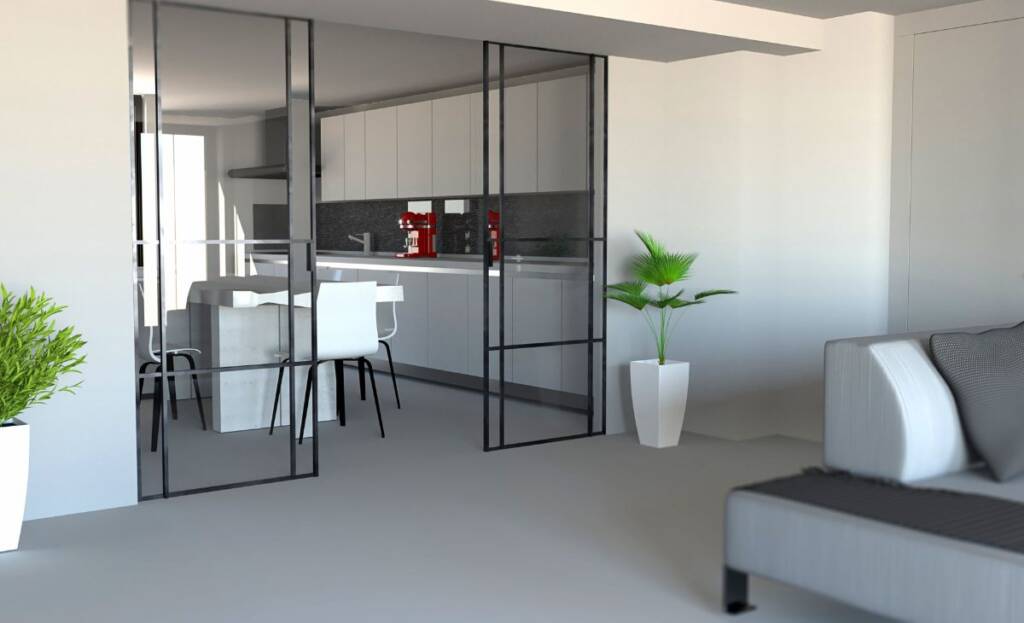
Unlike pocket doors, sliding double doors remain against the wall as they open, and they’re perfect for individuals who wish to explore different interior door types and styles.
Door Finishes
A Door finish is a layer of coating applied to a door panel to protect it from external factors and enhance its appearance.
Primed
A primed finish is a single coating that seals the door panel and allows the paint to set in comfortably.
Stained
A stained finish is used to enhance the natural grain and even the tone of the wood pattern.
Prefinished
A prefinished door is a ready-to-install factory-designed with finished sanding, coating, painting, or staining.
Unfinished
Unfinished doors are pre-sanded; however, they are not stained or painted.
Things to Know Before Buying
Below are tips to consider when selecting styles of interior doors:
Door Type (Pre-hung and Slab)
- pre-hung: this door includes the door frame, door hinges, and knobs and is ready to be installed.
- slab: this door is an unfinished panel that requires painting or staining and doesn’t include a frame, hinges, or handle set.
Dimension
The standard sizes of doors are determined by width and height. Normally, most panels will range between 24, 28, 30, 32, and 36 inches wide and 80 inches tall. Measure width, height, and thickness for those shopping for an unfinished slab. For pre-hung doors, individuals should add a measure of space between the studs and the thickness of the jamb.
Door Swing
To determine the door handle, individuals must stand outside the door from the entry point. If the door hinges are on the left, then the door is left-handed, and the opposite is correct.
Remember, a door is more than mere wood; it reflects the house’s entity. Each pattern and style may add an element of comfort or disarray, so select wisely.


